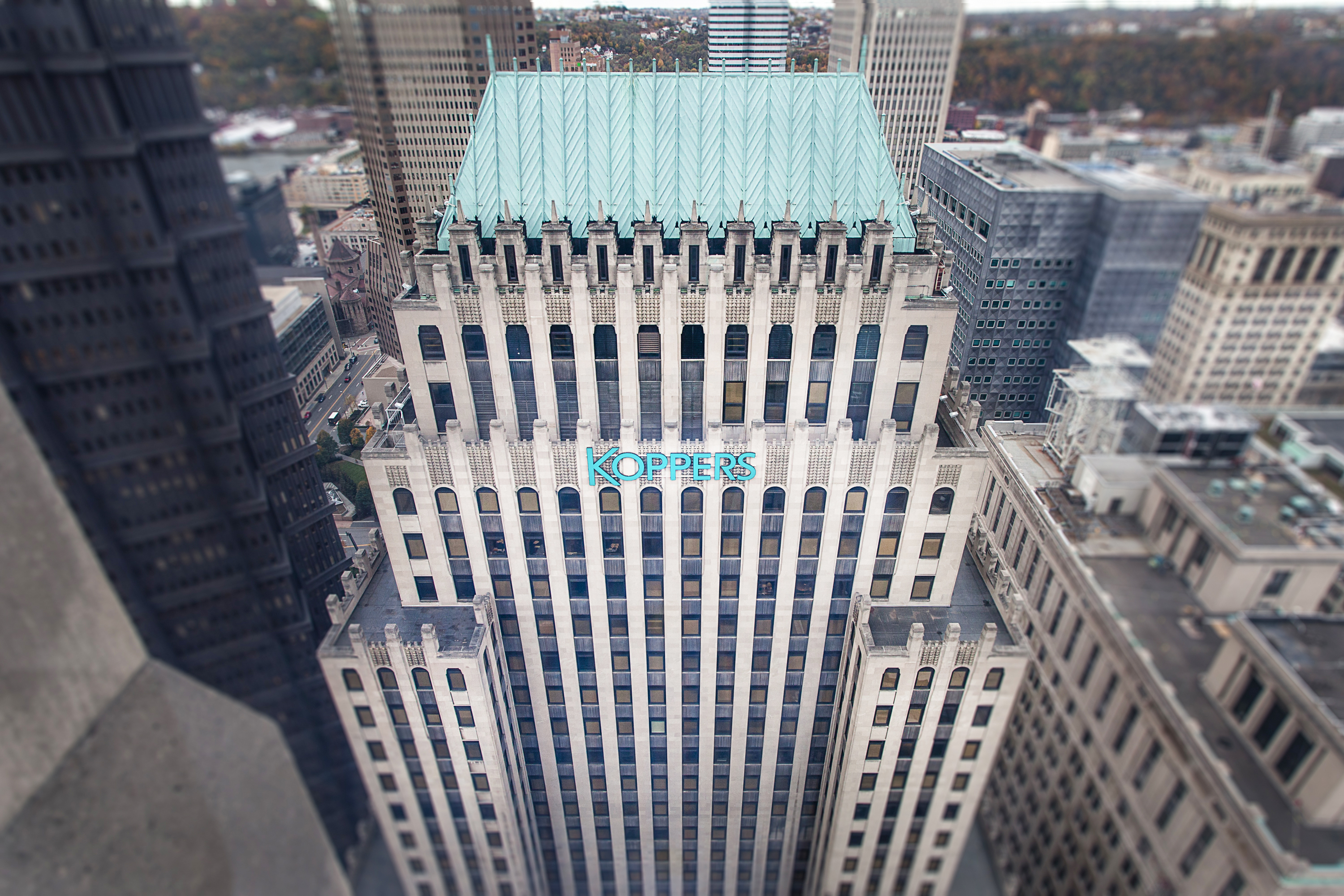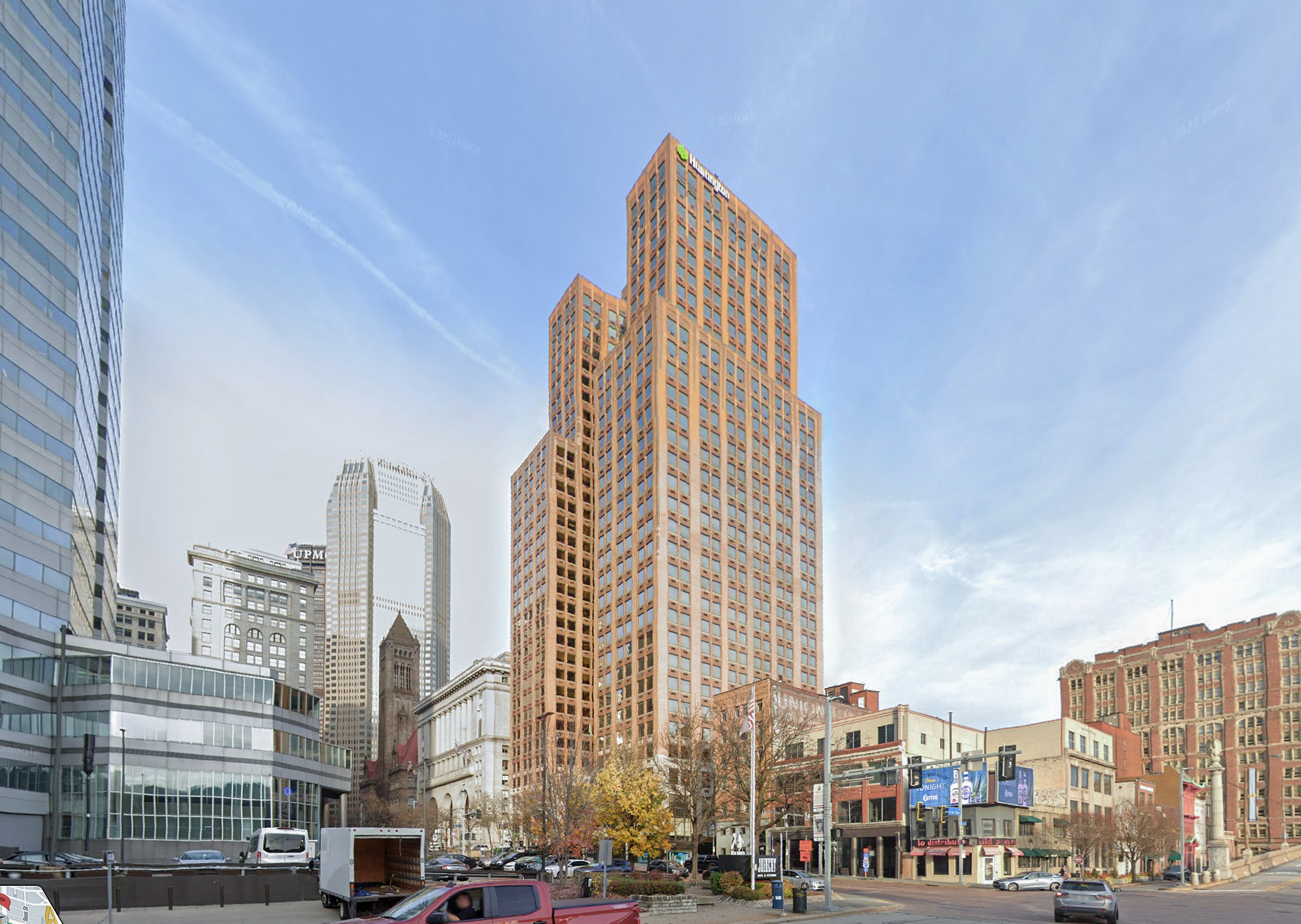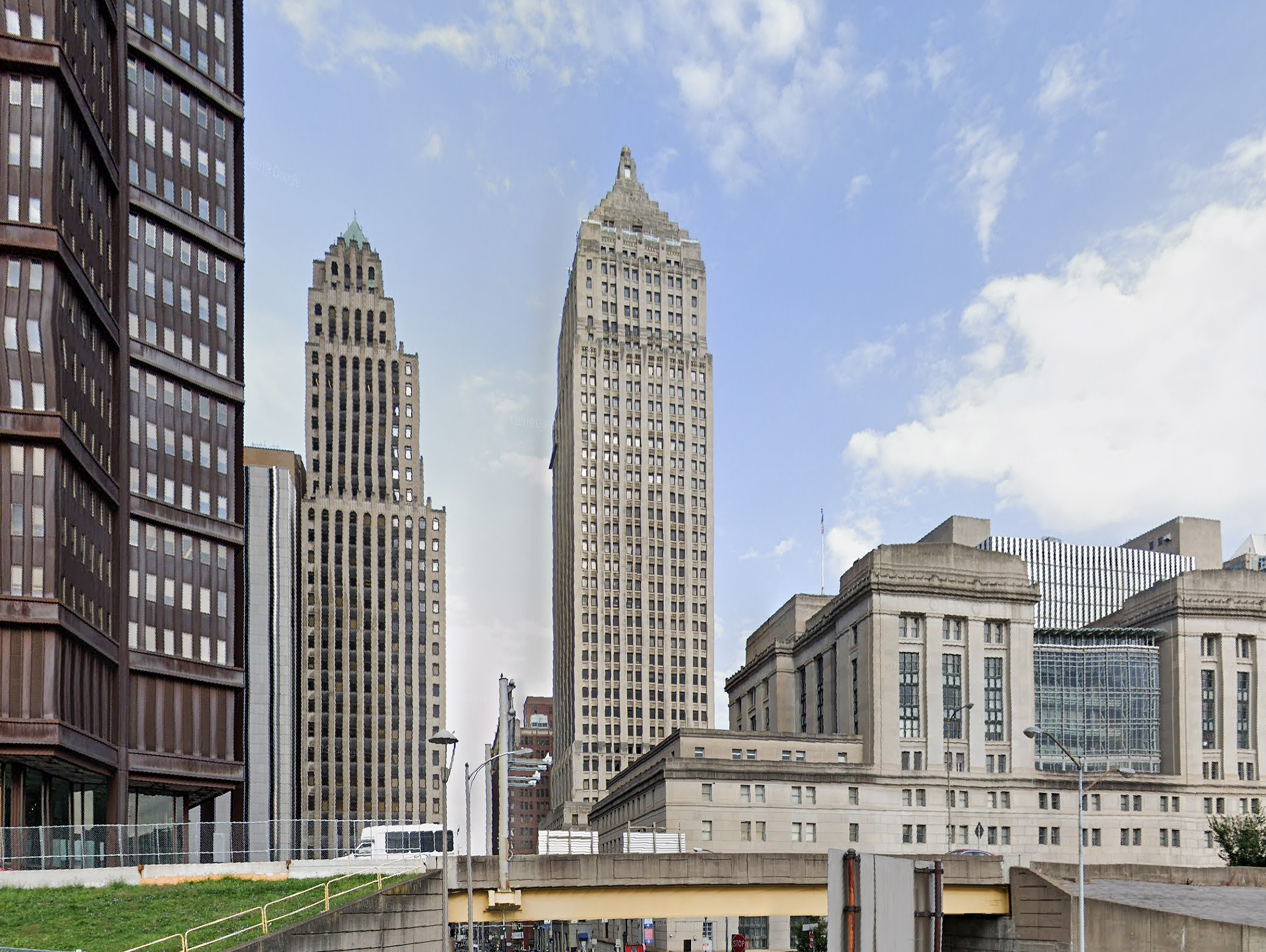The Koppers Tower is an Art-deco skyscraper designed by Graham, Anderson, Probst & White and built between 1927 and 1929, for a reported $5.30 million dollars, in Pittsburgh, PA.
Its precise street address is 436 Seventh Avenue, Pittsburgh, PA. You can also find it on the map here.
At the time of its completion in 1929 the Koppers Tower incorporated solutions that were quite advanced at the time, these included the use of limestone and granite to clad the facade, which was a departure from the brick and terra cotta that were commonly used in buildings at the time. The use of these materials gave the building a more modern and sophisticated look, and helped to set it apart from other buildings in the city.



